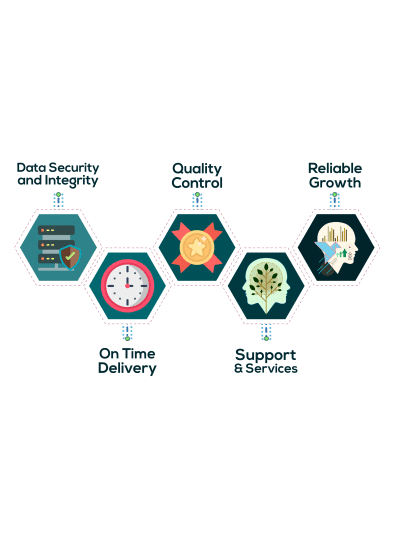
Choosing The Right Cloud Service Provider For Your Business
Today’s businesses need tech to thrive, and cloud computing offers businesses of all sizes the tools they need to grow and innovate. Choosing the right cloud provider is key to keeping things running smoothly, protecting data, and saving money. With the best provider, businesses can leverage powerful cloud solutions to stay ahead of the curve in a fast-paced market.
Step 1: Know Your Needs
The first step is understanding your specific requirements. What kind of workloads will you be running on the cloud? Are you dealing with complex computations requiring significant processing power? Is your focus on storing and managing large amounts of data?
Analyze your current storage needs and estimate how much data you expect to generate in the future. Similarly, determine the processing power you’ll need, considering factors like CPU cores, memory, and potentially even graphics processing units for specialized tasks.
Finally, choose a provider that offers scalable cloud infrastructure solutions to accommodate your growth and changing demands over time.
Step 2: Prioritize Security
Security should be your top priority when venturing into the cloud. Look for a provider that utilizes robust encryption standards to safeguard your data at rest and in transit.
Evaluate their data control policies and residency options to understand where your data will be physically stored. You can research the provider’s past security record to gauge their effectiveness in protecting user data.
Also, ensure they comply with relevant industry regulations specific to your business, such as the Health Insurance Portability and Accountability Act (HIPAA) for healthcare data or the General Data Protection Regulation (GDPR) for data privacy.
It’s also good to verify their commitment to security through regular audits and established incident response plans that outline how they handle potential breaches.
Step 3: Understand Service Level Agreements (SLAs)
Before signing any contracts, take time to understand the service level agreements (SLAs) offered by potential providers. Focus on key metrics that directly impact your business, such as uptime guarantees and response times for support tickets.
Review the details of their support services, including availability (whether they offer 24/7 support) and the expertise of their support staff. Finally, confirm what happens if the provider fails to meet the agreed-upon service levels. Do they offer penalties or service credits to compensate for downtime or performance issues?
Step 4: Implement Cost Control
Cloud providers offer various pricing models, so it’s important to understand how they charge. Common options include pay-as-you-go, where you only pay for the resources you use or subscription-based plans for predictable monthly costs. There might also be reserved instance options for discounted pricing on dedicated resources.
Don’t be fooled by headline prices. Factor in potential hidden costs like data transfer fees, egress charges for moving data out of the cloud, and any costs associated with premium features or additional services. Consider the total cost of ownership (TCO) which includes not just upfront costs, but also management overhead and long-term scalability requirements.
Step 5: Monitor Performance
Consistent performance is vital for smooth cloud operations. Request data on the provider’s performance metrics, including average response times, network latency (which impacts how long it takes for data to travel), and historical uptime percentages.
Don’t just rely on the provider’s information. Read customer reviews and testimonials to gain real-world insights into performance and reliability from existing users.
For geographically dispersed teams or a global customer base, prioritizing providers with a network of data centres across different regions can significantly improve response times and reduce latency.
Step 6: Opt For Stellar Support
Exceptional customer service is a game-changer when it comes to your cloud experience. Look for providers offering comprehensive technical support around the clock, 24/7. This ensures you can get help whenever you need it, regardless of time zone differences.
Rapid resolution is key; so, evaluate the provider’s average response times for support tickets and prioritize those with a proven track record of getting you back on track quickly.
The support team’s expertise is also crucial. Choose a provider with certified and experienced personnel who can effectively troubleshoot complex issues specific to your cloud environment.
Alternatively, you can look for providers that offer self-service resources like knowledge bases and tutorials. This empowers you to resolve common issues independently, saving you valuable time waiting for support.
Step 7: Avoid Lock-in
Vendor lock-in occurs when you become overly reliant on a specific provider’s platform, making it difficult and expensive to switch later.
To avoid this trap, choose a provider that supports open standards and application programming interfaces (APIs). Open standards allow you to integrate with other services and tools more easily, fostering a flexible and adaptable cloud environment.
Ensure the provider allows you to easily migrate your data out of their platform if needed. This data portability provides freedom and avoids getting locked into a single solution.
When evaluating potential partners, consider their integration capabilities. Most importantly, choose a provider that can seamlessly connect with your existing IT infrastructure and other cloud services you might use.
Step 8: Build A Partnership
Choosing a cloud service provider is a strategic decision, and a successful partnership requires ongoing communication and collaboration. Many providers offer free trials and demos. Take advantage of these opportunities to test-drive the platform, assess its capabilities, and ensure it aligns with your needs. Maintain open communication with your cloud provider.
Discuss your evolving needs and work collaboratively to ensure the solution continues to meet your requirements as your business grows. Plus, schedule regular reviews to assess the provider’s performance against the agreed-upon SLAs. This proactive approach ensures you’re getting the most out of your cloud investment and can identify any areas for improvement.
Wrapping Up
Selecting the right cloud service provider is a crucial decision that can significantly impact a business’s efficiency, security, and growth potential. By assessing business needs, evaluating security measures, understanding SLAs, comparing cost structures, analyzing performance and reliability, and considering support and flexibility, businesses can make informed decisions.



